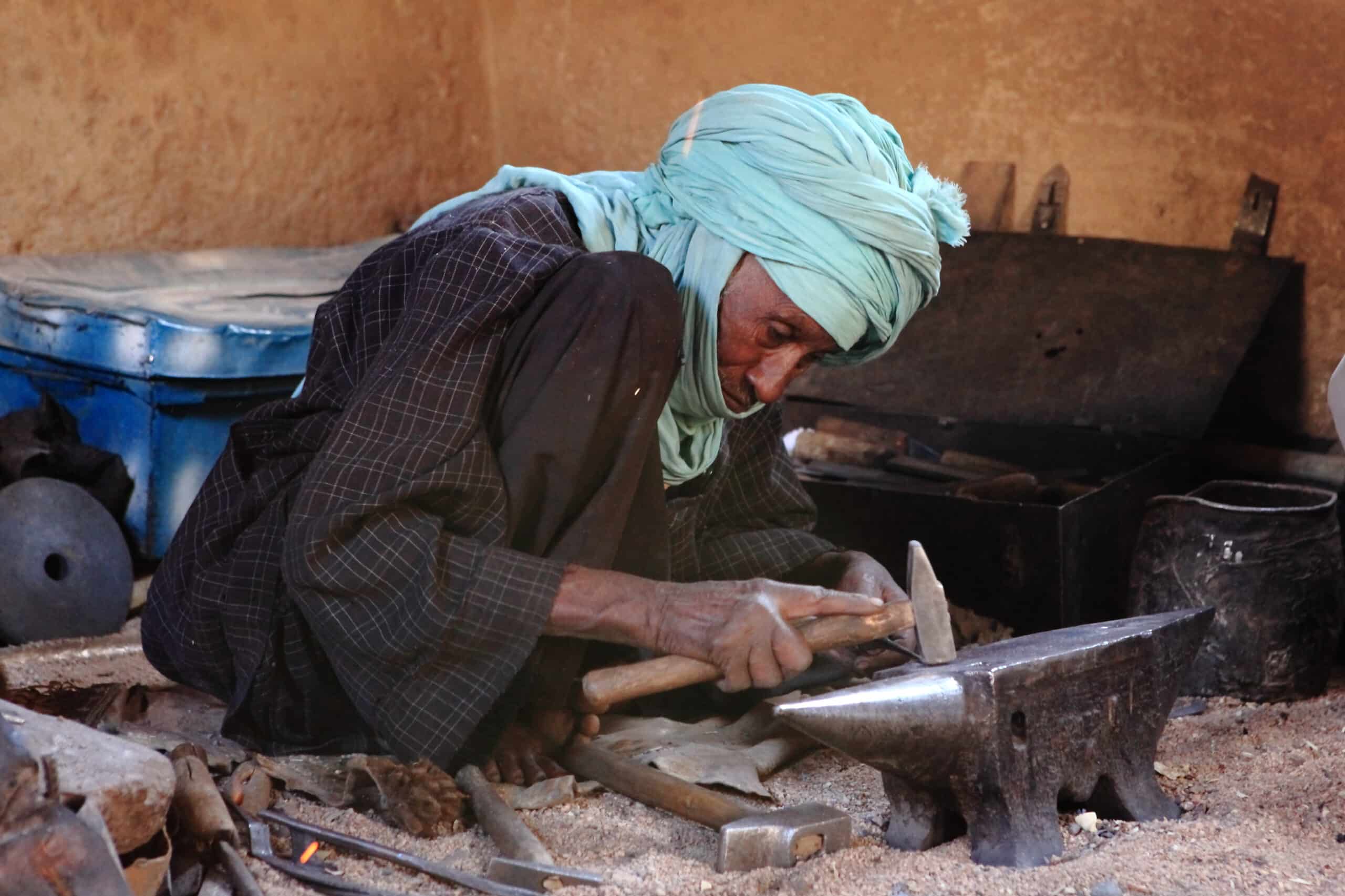Emblematic Tuareg handicrafts
Certain objects are so representative of Tuareg society that they have become cultural emblems. These include
The Tamzakt or Aïr saddle
This saddle is used to harness dromedaries, whether for racing or fighting. Dromedaries, symbols of prestige in the Algerian Sahara, are a source of pride for their owners, and the quality of the saddle also reflects the reputation of the Tuareg. The emerald green colour, obtained from copper oxides, and the triangular patterns are symbols of protection.
The Takouba, the traditional Tuareg sword
The Takouba is the emblematic sword of the Tuareg people. Often made from salvaged metal, it is distinguished by its red leather scabbard, sometimes decorated with silver or copper plates. This sword is worn proudly by the Tuareg, even though it is forbidden to wear it in town.
Travel bags
Travel bags, like the saddle, are objects of great value to Tuareg camel drivers. Popular with tourists because of their small size and price, these bags are symbols of authenticity and nobility. They require meticulous work and are often less ornate to make them easier to make.
One of the specialities of Tuareg craftsmanship is the manufacture of silver jewellery, in particular the Agadez cross, which is a real marvel.

